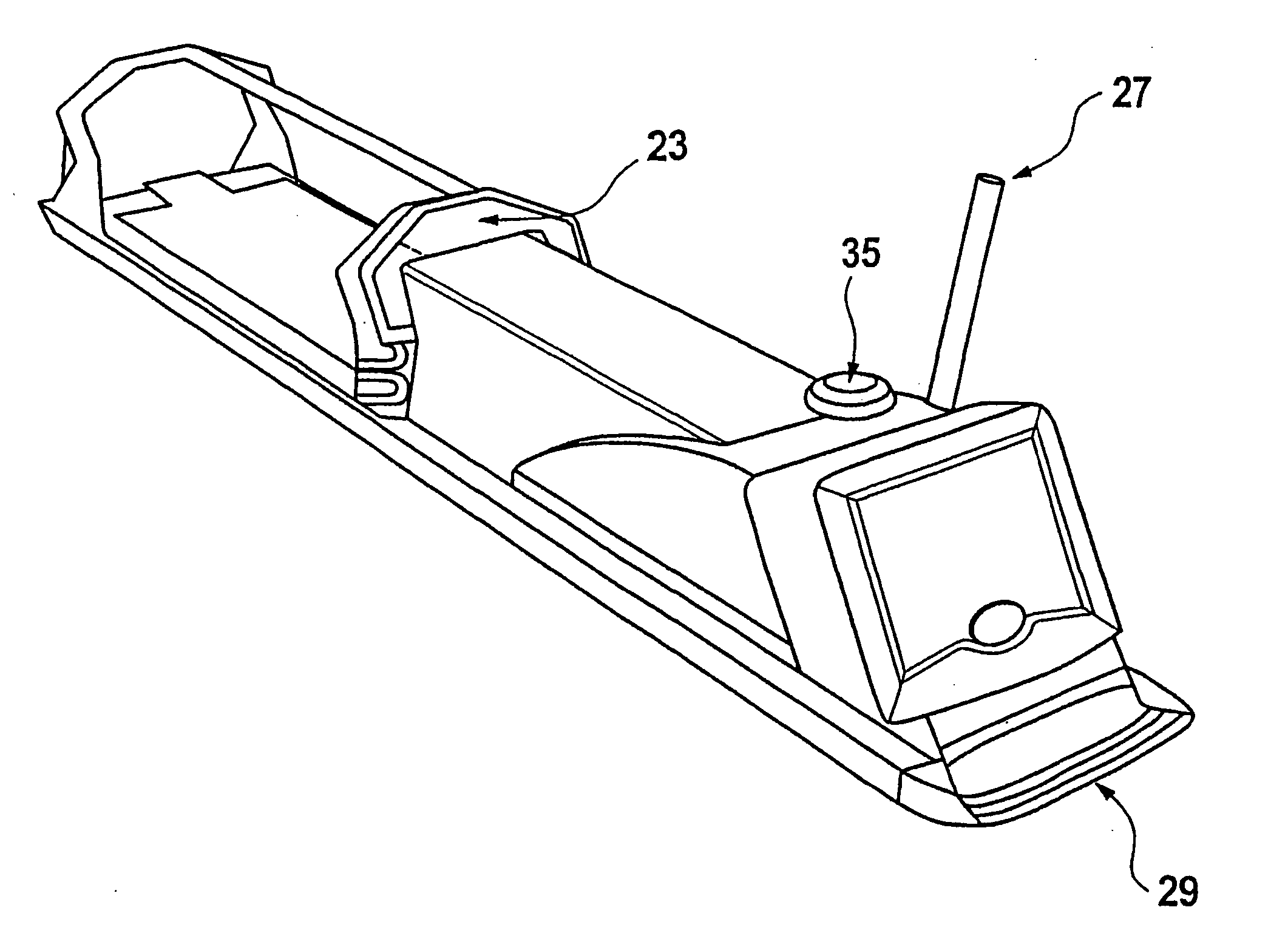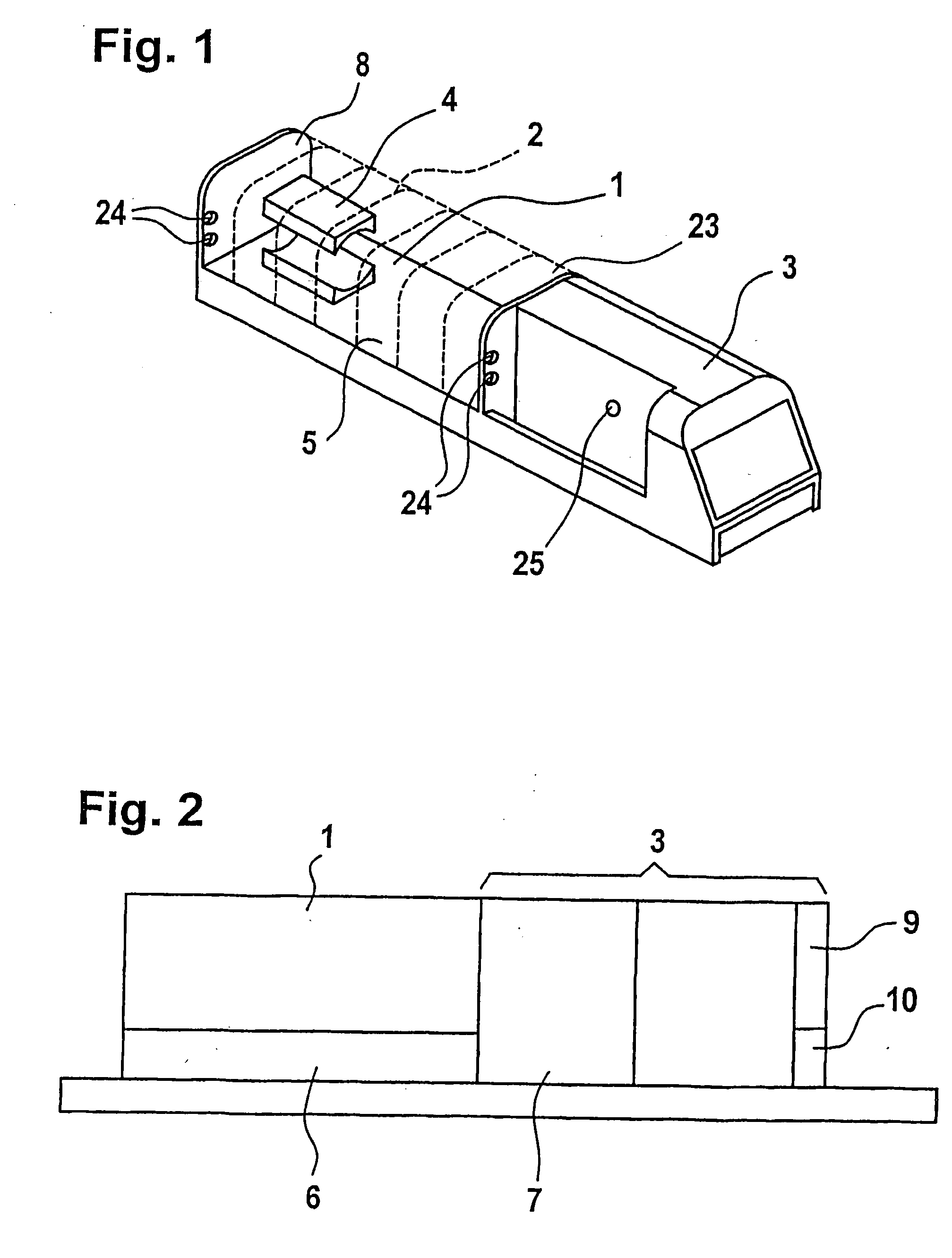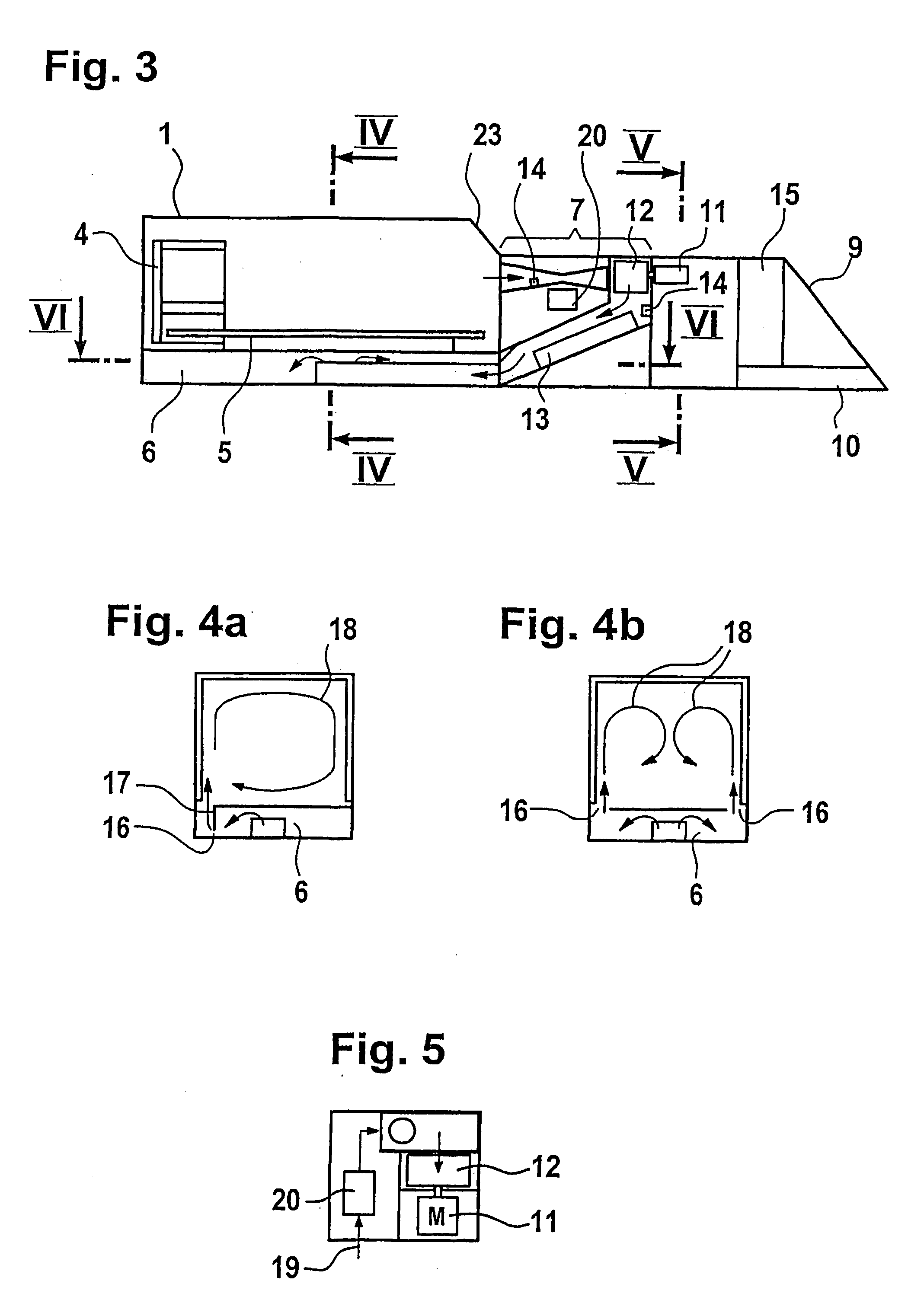Incubator for newborn and premature patients
a technology for premature patients and incubators, which is applied in the field of incubators for newborn and premature patients, can solve the problems of inability to examine patients by nmri, inability to independently maintain the body temperature of premature and premature babies, and inability to use nmri to examine patients, etc., and achieves the effects of convenient transportation, uniform temperature distribution, and small siz
- Summary
- Abstract
- Description
- Claims
- Application Information
AI Technical Summary
Benefits of technology
Problems solved by technology
Method used
Image
Examples
Embodiment Construction
[0042] A first exemplary incubator according to aspects of the present invention is shown in FIG. 1. The incubator has a patient-receiving space 1 which can be closed off by a hood 2 indicated with broken lines.
[0043] The hood 2 has a double wall which, in addition to protecting against radiation losses, also protects the patient from the high noise level of the tomograph. To reduce heat losses when the hood is open, four small hatches 26 (FIG. 8) are integrated into the hood, and access to the patient is possible through these hatches. The air delivery and control unit 3 is situated at one end of the incubator. One or more measurement coils 4 for receiving the signals for the NMRI tomography are provided in the patient space 1, and, at the other end of the patient space 1, there is a hatch 8 for introduction and positioning of the measurement coils 4. The patient lies on a support surface 5. The patient can also be observed through the transparent hatch 8 during the examination in...
PUM
 Login to View More
Login to View More Abstract
Description
Claims
Application Information
 Login to View More
Login to View More - R&D
- Intellectual Property
- Life Sciences
- Materials
- Tech Scout
- Unparalleled Data Quality
- Higher Quality Content
- 60% Fewer Hallucinations
Browse by: Latest US Patents, China's latest patents, Technical Efficacy Thesaurus, Application Domain, Technology Topic, Popular Technical Reports.
© 2025 PatSnap. All rights reserved.Legal|Privacy policy|Modern Slavery Act Transparency Statement|Sitemap|About US| Contact US: help@patsnap.com



